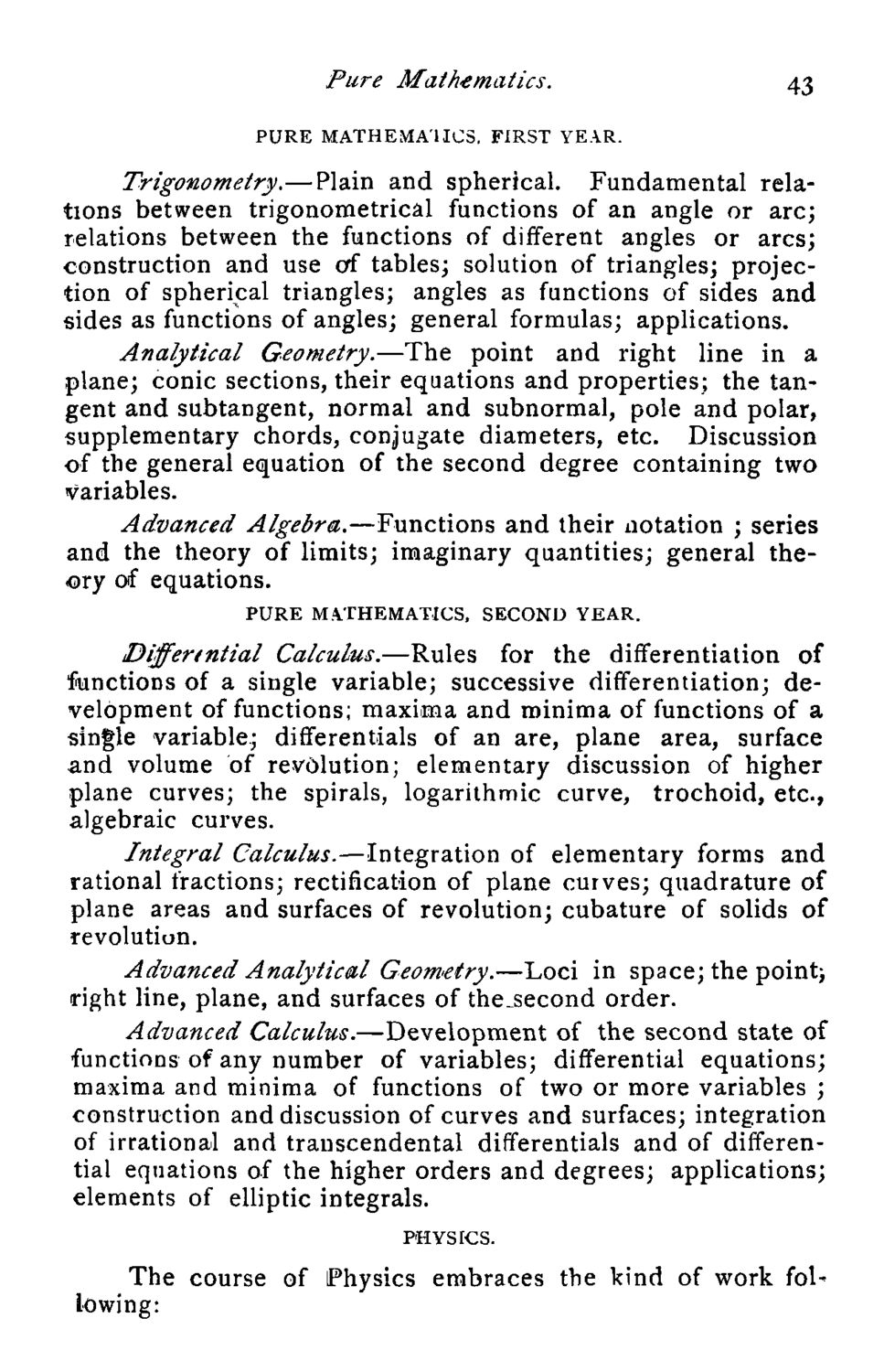| |
| |
Caption: Course Catalog - 1884-1885
This is a reduced-resolution page image for fast online browsing.

EXTRACTED TEXT FROM PAGE:
Pure Mathematics. PURE MATHEMATICS. FIRST YEAR. 43 Trigonometry.—Plain and spherical. Fundamental relations between trigonometrical functions of an angle or arc; relations between the functions of different angles or arcs; construction and use of tables; solution of triangles; projection of spherical triangles; angles as functions of sides and sides as functions of angles; general formulas; applications. Analytical Geometry.—The point and right line in a plane; conic sections, their equations and properties; the tangent and subtangent, normal and subnormal, pole and polar, supplementary chords, conjugate diameters, etc. Discussion of the general equation of the second degree containing two variables. Advanced Algebra.—Functions and their notation ; series and the theory of limits; imaginary quantities; general theory of equations. PURE MATHEMATICS, SECOND YEAR. Differmtial Calculus.—Rules for the differentiation of functions of a single variable; successive differentiation; development of functions; maxima and minima of functions of a single variable; differentials of an are, plane area, surface and volume of revolution; elementary discussion of higher plane curves; the spirals, logarithmic curve, trochoid, etc., algebraic curves. Integral Calculus.—Integration of elementary forms and rational fractions; rectification of plane curves; quadrature of plane areas and surfaces of revolution; cubature of solids of revolution. Advanced Analytical Geometry.—Loci in space; the point; right line, plane, and surfaces of the ^second order. Advanced Calculus.—Development of the second state of functions of any number of variables; differential equations; maxima and minima of functions of two or more variables ; construction and discussion of curves and surfaces; integration of irrational and transcendental differentials and of differential equations of the higher orders and degrees; applications; elements of elliptic integrals. PHYSICS. The course of Physics embraces the kind of work following:
| |